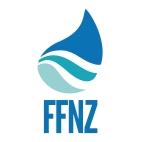Waitaki District Council fluoridation levels out of control - and the council says that's OK
Water samples taken by Oamaru residents and sent to an accredited laboratory found the level of fluoride in the water coming out their taps was well outside the council’s stipulated target and outside the upper limit recommended for fluoridation by the Ministry of Health.
The samples were taken on the 20th, 23rd and 24th of September, and the amounts detected were 1.10, 1.02 and 1.10 respectively. The Council had advised fluoride levels would be targeted at 0.8ppm and always within the Ministry of Health recommended maximum level of 1ppm. After being alerted of the high levels the Council took its own samples. These were the first samples council had taken since fluoridation commenced in July. Finding the same alarmingly high results (1.07 and 1.08ppm) they stopped fluoridation on the 4th of October and have not yet restarted.
The Council has claimed it is not required to do any testing and only needs to monitor what goes in (what they call the “dose setpoint target”) yet the legislation requires testing twice weekly as it leaves the plant. And while the levels were within the maximum allowable level (now shown to cause IQ loss equivalent to Lead) they were outside the maximum recommended level.
The questions this raises are:
- what were the levels between the 8th of July and the 4th of October? For all anyone knows they could have been far higher than 1.08ppm.
- how is it that the council staff and the consultants did not understand that the water needed to be tested as it left the plant?
- how can the Council be trusted to add a highly toxic chemical to the drinking water, that is agreed by even fluoridation promoters to be neurotoxic at just 1.5ppm?
- how much is it costing the Waitaki residents to get this level equipment calibrated correctly?
The Waitaki District Council started fluoridation, for the first time ever, on the 8th of July 2024 because of the Director-General of Health’s (DGH) directive and their decision not to seek an Interim Injunction until the outcome of a court case against the DGH was known.
The Council could still choose to keep fluoridation turned off and keep their community safe, instead of undertaking this dangerous and fraught action. They could legally resist the directive from the DGH by seeking an Interim Injunction. It’s as simple as that.
